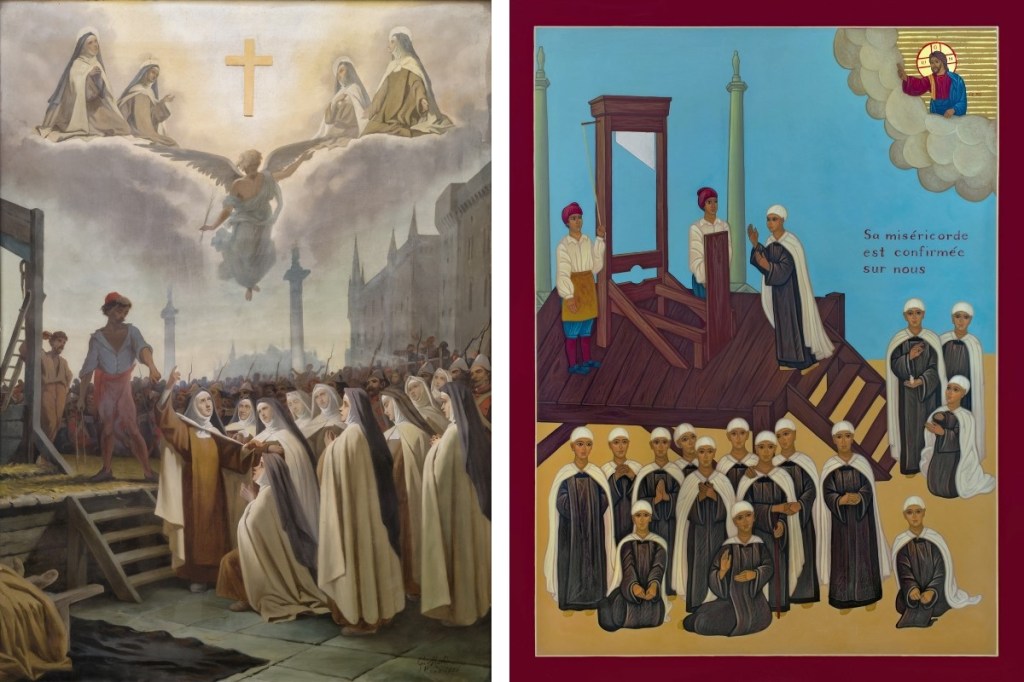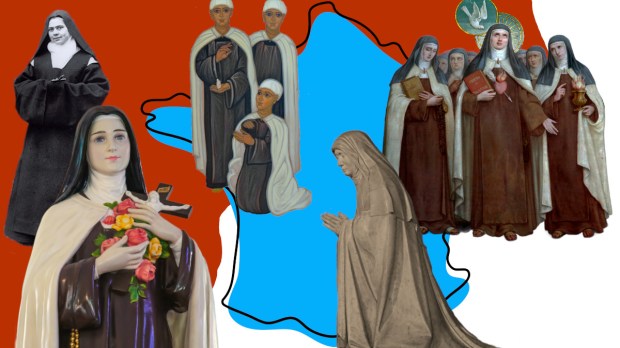The Roman Catholic Carmelite Order is believed to have had its origin in the late 12th or early 13th century, but its spiritual origins go back even further, to those ancient days when the Prophet Elijah and his followers lived a life of prayer, silence, and solitude on the slopes of Mount Carmel. It is there that the first Carmelites formed. This region of Palestine, however, became unstable politically, and by the late 1200s they were forced to relocate or perish. The order was reestablished in Western Europe.
Women were also drawn to the Carmelite tradition, attracted to a simple life of work and prayer. Strong tenacity over the years allowed the Carmelite Order, the Catholic family of monks and nuns, to survive.
Carmel means “garden,” a fitting word to describe the life of peace and serenity that Carmelite nuns worldwide lead today.
The greatest thing we can do is to love one another, for love is the essence of God.” – St. Theresa of Avila
Saint Teresa of Avila, foundress and reformer (1515 -1582)
In the 16th century, cultural and social changes and turmoil affected the perception of religion and the Catholic Church. Teresa of Avila, Spain, a pious catholic, saw the need to reform the rules of the order she served.

Spurred by prayer and commitment, she set out to establish new norms.
She founded a small convent with a few supporters in 1562. The Spanish nun, supported by her friendship with St. John of the Cross, wrote the rules, the basis for the constitution of the new reformed convent of the Discalced Carmelites. Therese died at age 67, thanking God that she died “a daughter of the Church.” She wrote four books, including The Way of Perfection, a book of prayer for her own nuns. Teresa of Avila was declared a doctor of the Catholic Church by Pope Gregory in XV in 1622.
Discalced Carmelite Nuns in France
A group of nuns from Spain formed the first reformed monastery in Paris in 1604.
The outbreak of the French Revolution, dubbed a period of terror, caused severe consequences for Catholics throughout the country: churches and clergy were forced to conform to a new order, a revolutionary body whose aim was to suppress Christianity, or face the consequences.
The Carmelite community of Compiègne, northeast France, was one of the victims of persecution imposed by the Revolutionaries.
Founded in 1641, the nuns were given the ultimatum to break their vows or be punished. They refused. The Revolutionary government raided and seized their monastery, shattered all religious objects, declared the nuns enemies of the state, and made them prisoners. Sixteen nuns, including the prioress Mother Teresa of Saint Augustine, were sentenced to death, taken to Paris, some 79 kilometers from Compiegne, and killed by guillotine. As the nuns ascended the platform to be headed, they renewed their vows and sang together Laundate Dominum,” Praise to the lord, all you nations.”

According to one of the current nuns of the Carmel of Compiègne:
The community of Carmelites of Compiègne is small in number today but is actively preparing the file for the Canonization of the 16 Carmelites of Compiègne of the Revolution (guillotined on July 17, 1794, the day after the solemn feast of Notre-Dame du Mont-Carmel). The sisters live their contemplative life of solitude with God, praying for the world and the Church, and especially for Peace, just like their martyred mothers who offered themselves “so that peace may be restored to the Church and in the state.”
Underneath the community’s chapel is a memorial, a crypt dedicated to the 16 Carmelite nuns who died.
Saint Thérèse of Lisieux (1873-1897)
Saint Thérèse lived as a Carmelite nun in Lisieux Normandy from 1888, when she was 15, until 1897 when she died a professed Carmelite nun.
The saint, also known as Saint Thérèse of the child Jesus and The Holy Face, was also an author. She began her autobiography, The Story of a Soul, two years before her death. In 1997 Pope Paul 11 declared her a doctor of the Church just as Teresa of Avila the reformer had been honored.
The Basilica of Saint Thérèse of Lisieux, built in 1929, welcomes visitors and pilgrims each year, making Lisieux the second-largest pilgrimage city in France after Lourdes.
A tradition of holiness
Another French Carmelite nun who has been canonized by the Church is St. Elizabeth of the Trinity (1880-1906). Others have been beatified or declared venerable, including Marie of the Incarnation (1566–1618, beatified in 1791) and Marguerite of the Blessed Sacrament (1619–1648, declared venerable in 1905).
Today, France counts 65 monasteries and around 900 Carmelites (including those in training).
All of you who are daughters of the Virgin and sisters try to love one another very much.” – St. Theresa of Avila
Federations of Carmelite Nuns
A Federation, as described by the Carmelites, is a vital structure of communion between monasteries that share the same charism.
There are three Federations of Carmelite nuns in France. They meet every three years to discuss and resolve questions and issues inherent to the various institutions in the country. Seeking answers together is fundamental for the Carmelites, as is a fraternal sharing in order to better serve the Church and community.

Present also at these meetings is a religious assistant, usually a Carmelite brother whose role is discreet but essential, a listener who encourages and helps come up with solutions.
Sister Anne, President of Fédération Avignon-Lyon, St Jean de la Croix, the one of the three French Federations, explained that the last assembly was held in Nevers, Central France from May 16 to 22, 2022. She confirmed that each community member of the Federation is represented by its prioress and by a delegate.
“As President, what seems essential to me is to serve the communities, to act as a link between the Caramels, and to ensure the unity of the Federation,” Sr. Anne said.



